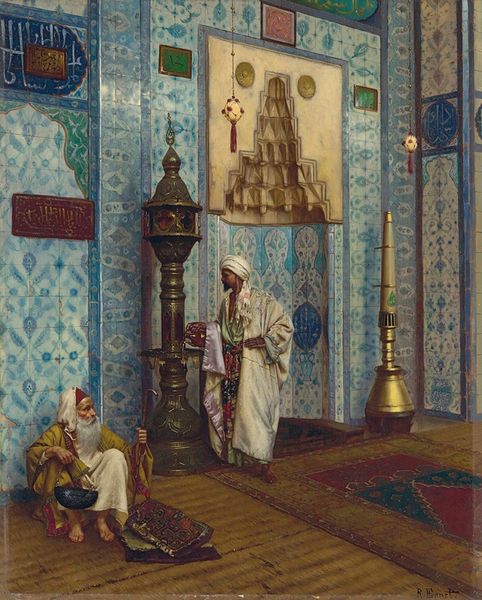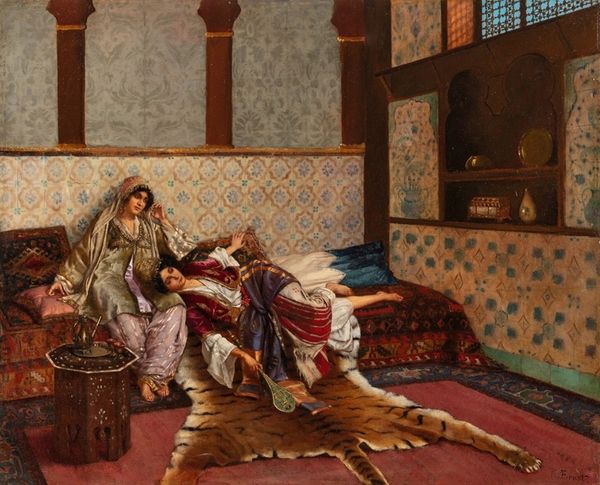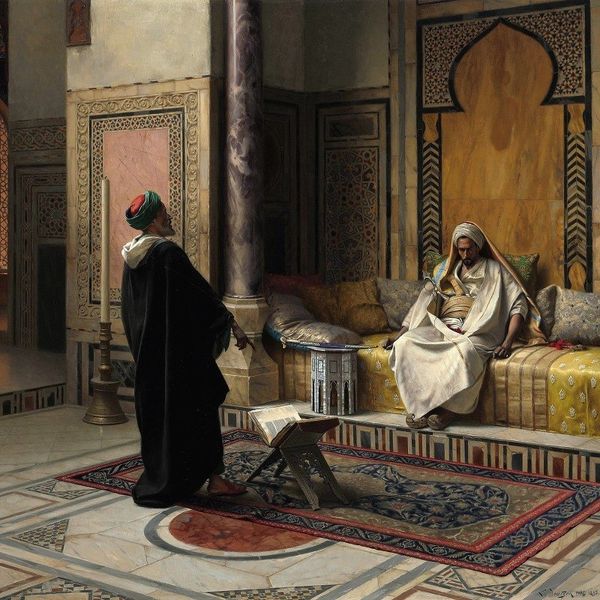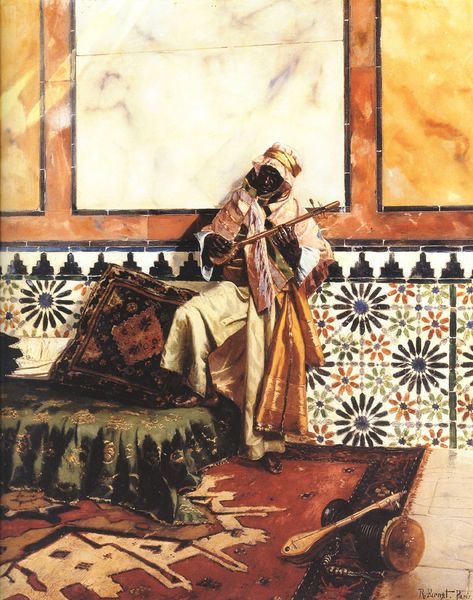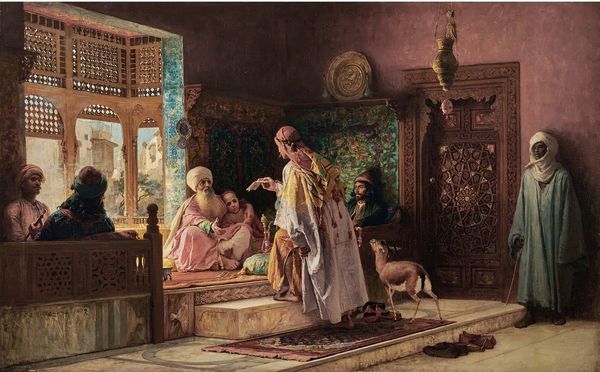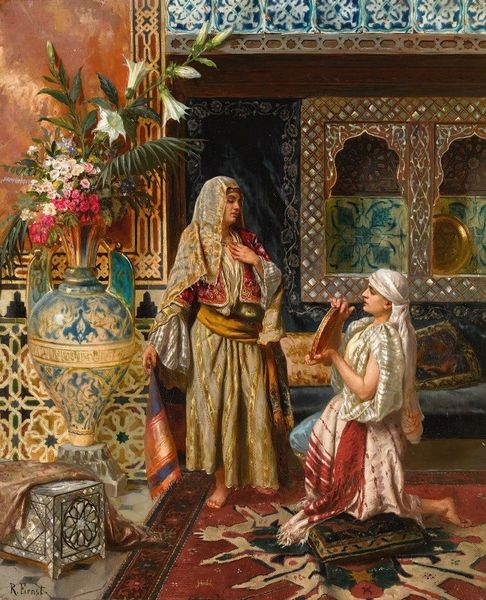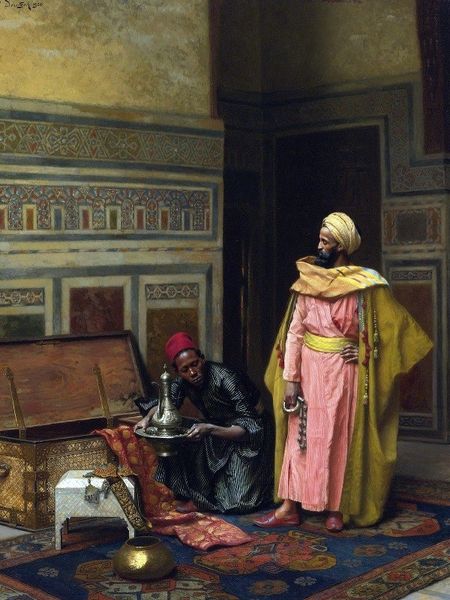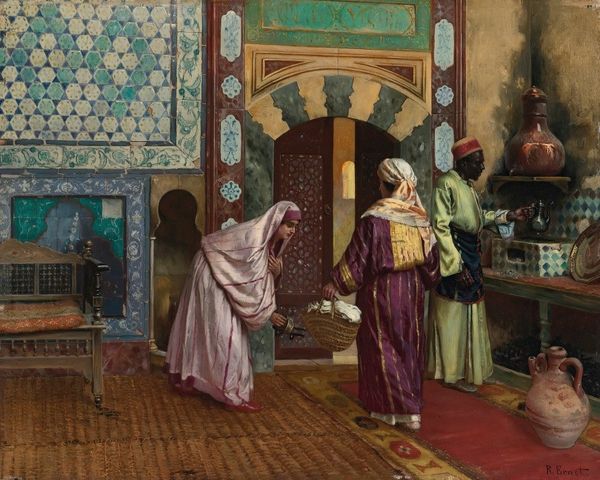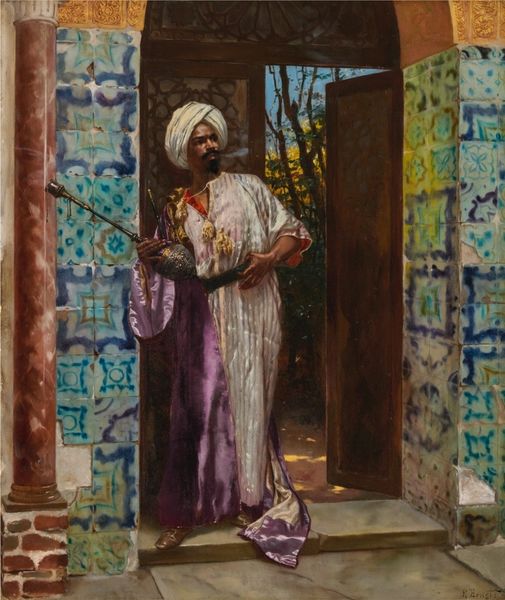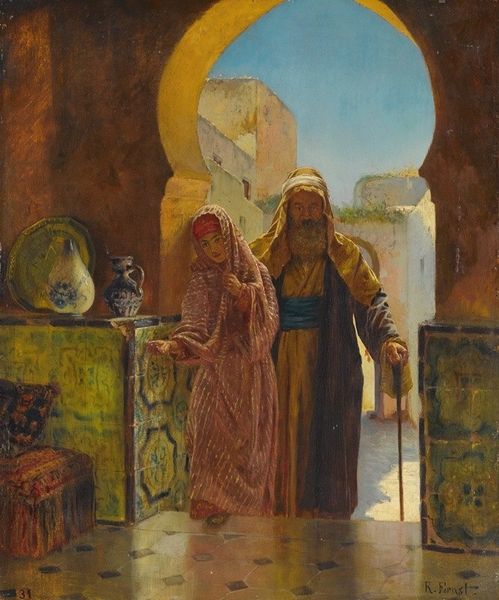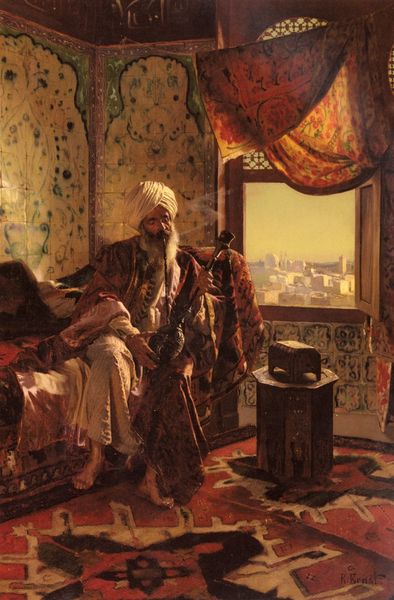
painting, oil-paint
#
portrait
#
gouache
#
painting
#
oil-paint
#
figuration
#
oil painting
#
coloured pencil
#
orientalism
#
genre-painting
#
academic-art
#
watercolor
Copyright: Public domain
Curator: Welcome. Here we have Rudolf Ernst’s work, “The Favorite of the Farm,” rendered, it would seem, with oil paint and watercolor. Immediately, I am struck by its almost photographic realism and attention to detail. What are your first thoughts? Editor: Well, the tactile qualities jump out at me. Look at the textiles: the heavy drapes, the rough tiger skin rug, the embroidered cushion. I wonder about the artisans who created them, the workshops, the trade routes... Curator: Indeed, the materiality is significant. Ernst masterfully employs light and shadow to give these surfaces palpable depth, heightening the sensory experience. The very composition speaks to a studied arrangement, does it not? The placement of the figures, the vase—each element precisely positioned within the pictorial frame. Editor: Yes, but it’s not just arrangement, is it? It’s about access to these materials. A tiger-skin rug speaks volumes about wealth and power. I’d like to understand where Ernst sourced his inspiration – how the consumption of this culture played a role in shaping his imagery and, thus, wider perceptions. Curator: A fair point. Ernst, of course, belonged to the Orientalist movement, a Western fascination with the “exotic” East that frequently relied on tropes and stereotypes. And yet, observe his formal skill—the interplay of geometric patterns in the tilework, the subtle gradations of color, the implied narratives within a closed domestic space. Semiotics would reveal much about the visual grammar at play. Editor: Agreed, though let’s not forget the artist's labor, too. How much time did Ernst invest in representing the textiles and architecture? What did he learn through the physical act of painting? Did that influence his perspective? And what did it cost, financially, to obtain such materials and create these images? Curator: Certainly, all valid avenues for inquiry. But from a purely aesthetic point of view, “The Favorite of the Farm” offers a complex choreography of forms and a sophisticated negotiation of representation. Editor: A negotiation heavily reliant on colonialist dynamics of consumption and presentation. But yes, Ernst's attention to the labor inherent in those power structures is something I can appreciate. Curator: Indeed, our approaches converge, highlighting the painting’s ability to stimulate both visual pleasure and intellectual contemplation. Editor: I'll walk away with a clearer sense of production and the structures of labor, access, and colonial consumption at work.
Comments
No comments
Be the first to comment and join the conversation on the ultimate creative platform.
